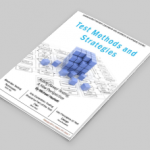The key factors for success when executing your vision.

There is an often cited quote:
“…unless an organization sees that its task is to lead change, that organization—whether a business, a university, or a hospital—will not survive. In a period of rapid structural change the only organizations that survive are the ‘change leaders.’”
—Peter F. Drucker
This phrase carries a nice tone. It sounds big and corporate, but in reality, we are actually in a period of super rapid organizational change. The best example is software development teams and organizations. We are entering a new area with DevOps and advances in technology—AI, Machine Learning and BlockChain, with teams relocated back to the home office, or fully distributed teams, with or without remote management. It’s a lot, and it’s all happening now. Unless we, as leaders, implement change correctly—the organizations we lead will be in trouble.
I have written in the past about managing knowledge workers , which outlines my belief in the ideas and ideals of Peter Drucker. I am also a believer in the personalities and management styles laid out by Paul Glen in Leading Geeks.
Knowledge workers and geeks require a different approach of leadership. Gone is the era of traditional leadership as we knew it. We are now in
additional leadership as we knew it. We are now in a role of being servant leaders as managers.
Today’s manager has already moved from being a controller to being a supporter, protector, and enabler of the knowledge worker. To put it plainly, we aren’t trying to hire the smartest people to command and control them. We instead support them so that they can thrive.
Much has already been written on this topic—both good and bad—but this article only aims to distinguish the differences between managing through change for managing millennials and baby boomers (see glossary).
I will side-step the good and bad discussion here, since it is not my belief or intent. What I want to focus on is managing the combination of these groups: knowledge workers, specifically geeks and millennials. These are two different personalities and mindsets that require leaders to be on top of their game. When it comes to managing them, we must perform at optimal levels.
Understanding Motivation for Baby Boomers vs. Millennials
The normal comparisons of Baby Boomers and Gen X’ers vs. millennials do not apply here. Knowledge worker geeks have always been different. Baby boomers who are knowledge workers react to management and leadership in very sophisticated ways, and it is different than the typical cadre of Baby Boomer responses. For instance, they may show contempt for managers/leaders that lack knowledge, often mistrust management and take their deadlines with a grain of salt. See Paul Glen for more information.
Some people may have different motivations. For example, Baby Boomer knowledge workers tend to want to be part of the decision-making process and have a desire for continuous learning. Differently, a millennial could be looking for leaders who are authentic, fully communicative, challenging, and are also more responsive to change.
Please remember that speaking about very large demographic groups leads to oversimplification. Many people resist this oversimplification and see it as a prejudice. It’s not. It gives a framework to engage in discussion. In the end, what the research shows is that when it comes to leadership and change, the views are the same across generations. This was demonstrated in the study by Eagle Hill consulting on change management, “Across Generations. Change is Change [and] People are People.”
How Reacting to Change is Similar between Geeks and Millennials
The tech/software development environment for both knowledge worker geeks and millennials are quite similar.
The specific area of leadership I want to focus on here is managing through change. The change can be simple—an organization can simply be implementing a new tool, a new process, seating arrangements—or the change can be more extreme. Many people talk today about disruptive and radical change.
This is a hot and vast topic. Therefore, it is prudent to be informed here. Know the terms. For this article, we are going to look at only one sliver of the leadership skills pie.
This is very real for me in my consulting work today. I see it all over. It’s not only about managing millennials—it’s more about changing culture. Our tiny sliver to focus on here is culture as a whole and using your vision for the team’s future to support the culture and change.
We know that we want to have teams engaging, participating, and working together toward a shared goal or mission.
We know that in order to achieve this goal, we need to communicate:
- Take feedback.
- Have full and transparent communication.
- Get buy-in.
- Involve people in the vision and execution
Understanding Motivation for Baby Boomers vs. Millennials
The normal comparisons of Baby Boomers and Gen X’ers vs. Millennials do not apply here. Knowledge workers and Geeks have always been different. Baby Boomers who are knowledge workers react to management and leadership in very sophisticated ways, and it is different than the typical cadre of Baby Boomer responses. For instance, they may show contempt for managers/leaders that lack technical knowledge, they perceive them as inauthentic and take their deadlines with a grain of salt. See Paul Glen for more information.
Some people may have different motivations. For example, Baby Boomer knowledge workers tend to want to be part of the decision-making process and have a desire for continuous learning. Differently, a Millennial could be looking for leaders who are authentic, fully communicative, challenging, and are also more responsive to change.

Please remember that speaking about very large demographic groups leads to oversimplification. Many people resist this oversimplification and see it as a prejudice. It’s not. It gives a framework to engage in discussion. In the end, what the research shows is that when it comes to leadership and change, the views are the same across generations. This was as demonstrated in the study by Eagle Hill consulting on change management, “Across Generations. Change is Change [and] People are People.”
How Reacting to Change is Similar between Geeks and Millennials
The tech/software development environment for both knowledge workers and Millennials are quite similar.
The specific area of leadership I want to focus on here is managing through change. The change can be simple—an organization can simply be implementing a new tool, a new process, seating arrangements—or the change can be more extreme. Many people talk today about disruptive and radical change.
This is a hot and vast topic. Therefore, it is prudent to be informed here. Know the terms. For this article, we are going to look at only one sliver of the pie.
This is very real for me in my consulting work today. I see it all over. It’s not only about managing Millennials—it’s more about changing culture. Our tiny sliver to focus on here is culture as a whole
and using your vision for the team’s future to support the culture and change.
We know that we want to have teams engaging, participating, and working together toward a shared goal or mission.
We know that in order to achieve this goal, we need to communicate:
- Take feedback
- Have full and transparent communication
- Get buy-in
- Involve people in the vision and execution
The Situation
There are still organizations that continue to struggle with Agile practices, with little collaboration, no test automation, and with an IT/Ops team-controlled manual production pipeline. This shows that change and the resistance to change is still an issue today.
How do we get our teams to believe and enroll in our change and vision, to buy into change as evolution and growth that leads to improvement, rather than seeing us as inauthentic and buzzword-blabbering corporate mouthpieces? We cannot be managers who cave in on change the minute a release date gets endangered or threatened.
How do we convey it as a process of evolution that leads to growth? In lieu of change being perceived as a buzzwords, change needs to be taken seriously. At this point, your role must be wholly authentic to maximize your effectiveness and enroll everyone in the change.
How to Lead in an Authentic Way

I dropped in a few important words there: culture and being authentic.
Every team and organization has culture even if it’s not discussed. Today in software development, innovation and progress demand cultures that support them. This means cultures that encourage full communication and trust as the foundation. Also, cultures are different. Agile culture is different from DevOps culture, which is different from eXtreme Programming or Lean. The culture that leads a team is an important foundation to establish before any tool or process change occurs.
Being Authentic is a vital trait to possess when working with Millennials.
“The theory Authentic Leadership can be best summarized as a type of leadership that builds legitimacy and credibility through honest relationships with followers. Authentic leaders value the input of their team, act with integrity and establish a strong ethical foundation.”
-Tim Bartlett
Change is the only constant. Be a leader—even when others are reluctant to change. At the same time, accept that we are human, and that things aren’t going to go perfectly. We sometimes make mistakes and when this happens, it is important to talk about it. Discussing the failure removes the stigma that surrounds it. The stigma that failure is detrimental is antiquated. It is not. Once you open the corridor by verbalizing the mistake or failure, re-shift your focus back to what lies ahead. In other words, “fix it and move on,” and fail fast— this is part of Agile culture. Get back to the vision. Focus on the future goal.
In the midst of a problem is where managers are able to ground themselves and find gravity in being “authentic.” At this point, it is critical that we do not put up fronts, lie, or sugarcoat. Explain the point of failure and convey the facts. Tell the truth. If there is blame to be had, delegate that blame and request accountability. By discussing the facts of the matter, and acknowledging that failure did occur, you solidify your position as a credible and transparent individual. This enhances your teams’ ability to move forward and get back to the vision.
The Lean Software Development (LSD) principle is to “empower the team.” If you entrust the team with decision-making, then they need to fully understand the vision. Another example is eXtreme Programming’s (XP) culture: XP culture provides a framework for organizations that harmonizes personal and corporate values.
The eXtreme Programming’s values are simplicity, communication, feedback, respect, and courage. For development organizations to hold these as core values was revolutionary in 1998 and still is today. Some development organizations only value the “get it done faster!” mindset. These XP values challenge many traditional management styles but are a must-have for knowledge workers today.

The bottom line on why change leadership is so crucial to technology leaders today comes from Peter Drucker.
“An effective leader knows that the ultimate task of leadership is to create human energies and human vision. The vision must be tied to what the firm values, and the leader must make this connection in a way that the organization can understand, grasp and support. Vision moves the enterprise; values stabilize the enterprise. Vision looks to the future, values to the past.”
Current Client’s Problem:
I currently have a client who made an executive decision to implement a new corporate communication tool—and it’s not going well.
Much of the staff is resisting and ignoring the tool because they feel that the tool is intrusive. They feel like this was imposed on them because there was no clear reason communicated for why it’s needed. “It’s bureaucracy,” and overhead, which is anathema to geeks. The tool was rolled out with no corporate vision, evolution to the future, natural progression for improvement, or increase in universal communication between distributed offices. So now the management in the company is scrambling to backfill by having town hall style meetings to explain themselves whilst looking incompetent.
In my opinion, their long-term sustainability is faltering, propelling many managers into a state of disarray and forcing them to police and call-out scofflaws. There is no more servant leader. It is now back to command and control. Due to this shift in leadership style, there is resentment and cynicism brewing amongst pockets of staff.
This could have been handled much differently and better in many aspects, leading to a way more successful rollout. My assessment and recommendation is to call it a mistake and own it. Some managers are reluctant to admit that they have made a mistake. I fear that this leads to long-term credibility problems and disengagement by the development teams.
It would have been better to own this as a teachable moment and provide a clear vision for where this tool will take people and move on. It’s easy to get people enrolled in the shared vision to communicate if you help people see the big underlying benefit or motivating factor for adopting the change. “It may seem like more bureaucracy for you, but for the offices in Boston, Bangalore, Beijing and Bucharest to all collaborate and better sync many channels onto one platform—this is a great solution!” When they saw the bigger picture (the real problem they were trying to solve) many—yet not all—attitudes changed. Resentment decreased and adoption increased.
Big Change: Top Problems that Development Teams Face
Let me lay out a few very real dilemmas and change that development teams face today:
- “We’re DevOps now.” (Similar to the teams confidently declaring, “We’re Agile now” in 2005 but are still not)
- “Everyone works toward deployment. If you aren’t—why are you working on software?”
- “The development pipeline must be fully deployment-ready at all times.”
- “The big giant automated mess of regression tests is out of control. It takes too much time to maintain, takes too long to analyze—fix-it now to be automatically run in less than 1 hour with no false fails.”
- “Dev now has to do TDD and unit test ‘everything’”
- “This year we are re-architecting our 20 year old big moneymaker application to containers. OK, go ahead. But still keep going on current development—just faster.”
These are grand statements. I bet some of you may be in the middle of these situations. They may seem extreme to you, yet I have heard all of these more than once in the past year. These statements or future visions are set to have precarious ends.
Remember the first implementations of Agile or Scrum? Many times it was imposed and for many, even more than a dozen years later, lots of bad feelings about ScrumBut practices still linger.
The key is to get the team to believe in your vision of the future and embrace change. What will that get us? Why? How is this a good evolution and innovation?
To understand what change is really about, one of the original modern management gurus, Tom Peters, stated in an interview with McKinsey.com:
“We’re in the big-change business, aren’t we? Isn’t that the whole point? I mean, any idiot with a high IQ can invent a great strategy. What’s really hard is fighting against the unwashed masses and pulling it off—although there’s nothing stupider than saying change is about overcoming resistance. Change is about recruiting allies and working each other up to have the nerve to try the next experiment. You find allies. You encircle the buggers.
You don’t bring about change in real big meetings or virtual meetings. You bring it about one person at a time, face to face—when we discover we have some common interests and we’re both pissed off, say, at too many CEOs who talk about charts and boxes. And so we create a conspiracy. It’s a subversive act, and being co-conspirators in a subversive act requires trust and intimacy.
Change is also about giving reinforcement at precisely the right moment. I like to say that I never help anybody travel 95 yards down a field. I find people who are already on their opponent’s five-yard line, and at exactly the right moment I give ’em a very big, swift kick in the butt. And they fall over the goal line.”
How to Successfully Share Your Vision with Millennials, Geeks, and Knowledge Workers
To get started, let’s look at some varied perspectives on vision. As stated in the article on conversation.com by David Tuffley:
“At the very heart of leadership is the ability to articulate a vision of the future that inspires people and makes them want to get on board. With knowledge workers, it is necessary to first find out what their beliefs are and include these in your vision.”
Leading Geeks has a clear statement on a leader’s vision, as published by Guillaume Leclerc on glecerc.com:
“Provide narrative: The narrative that a leader provides or adopts and knits together the facts of an organization’s existence – and interpretation of its environment, purpose, identity, and strategy…. build on the defining narrative and projects it out into the future. It describes both a view of the defining narrative of the group at some future time and the transformational path between the current state and future state.”
Guillaume Leclerc further emphasizes points of leadership in reference to Leading Geeks by Paul Glen:
“Knowledge workers, Geeks, and Millennials need to be convinced that there is a reason for change. These are smart people—not cattle. These individuals would rather deviate than follow the pack. Explain, convince, and share the technology evolution; show them the need for change.”
Talk about the problem you need to solve, detail out the alternatives that were considered. This includes how you came to the decision, the vision, the bigger issues, and the prospective future that is anticipated. There needs to be an understanding and comprehension on an individual level as well as an organizational level as to why the change is necessary. If you are able to detail the benefits of commencing change, the fear of change slowly diminishes. Expound the expected benefits to be encountered on an individual and organizational level. Many of these benefits come in the form of career growth, client/customer satisfaction, and team improvement. Envision a future that is continuously evolving—never stagnant.

Key Factors for Success when implementing change:
- Enroll people in the vision. Share the plan to build new skills. Know and explain the why. Disruption is essential to business today, innovation is a foundation. Stagnation kills. Face-to-face interaction is essential and critical for buy-in. Email is the worst. The Eagle Hills Consulting survey revealed that fewer than 1 in 5 participants cited e-mail as their preferred method for receiving information during a change. Many people already have an “attitude.” Dilbert helps no one today. It’s not funny anymore. If it is, your organization’s culture is in trouble.
- Be consistent. Be strong. Do it right! Expect excellence, not perfection. Be honest when things don’t go right or as planned. Once you make a decision, stick to your guns. Artificial deadlines and meaningless goals or caving in are entirely disrespectful and show blatant disregard for others. You can’t seem like a parrot for executives. The change has to come from you. No empty words. You cannot say “I don’t want this either, but we have to…” This will lead to disaster and even more resentment. Be real; be authentic. Don’t lie or put up fronts.
- Knowledge workers and millennials will all force you to be a better leader, especially in technology where today’s staff can and will move onto different jobs quicker than ever. Both knowledge workers and millennials are famous for cynicism. If you announce good things to be anticipated or agreed upon items, and you fall through, you’ve fallen into trouble.
- When issues, complaints, problems or teams trying to take shortcuts come up, use these as teachable moments. Focus not on policing but on enrolling in your vision. Talk about possible resistance points and guide the team through your vision or change plan.
Hopefully, when you do it right, the change may not be as difficult as formerly thought. Support the notion of continuous learning.
Knowledge workers and millennials are famous for their desire to be challenged with constant learning. Millennials want constant change, movement, new challenges, and opportunities. Knowledge workers want continuous learning and innovation.
Lead a culture that supports and nurtures innovation, especially listening to staff for their innovative ideas on the proposed vision. It’s important to have a culture that believes in and practices continuous learning by challenging smart staff. Change is local. It may be a CEO that stands up at an annual or quarterly meeting and makes grand statements with plans and visions. But it is often the lowest level leaders—team leads, project managers, Scrum Masters, development leads, and test leads—that have to stick to the plan and vision to actually make that vision a reality. The most important leadership happens at the lowest level of leadership. When a staff members says “just this once,” “only this time, never again,” or “but the schedule,” it is prime-time for leadership. How will you show up?
Three plans for being a change leader Drucker, Leading Geeks, and, Eagle Hill consultants:
1. Five key traits of a Change Leader, according to Peter Drucker in “How to Manage through Change, the Drucker Way: Where are the Change Leaders?” by Jenny Darroch:
1) A change leader gathers data and information
- What is your mission?
- Who are your customers?
- What does your customer value?
- What are your results?
- What is your plan?
2) Change leaders filter new insights through a marketing and innovation lens. In fact, Drucker once wrote, “business has only two functions—marketing and innovation.”
3) At some point, change leaders need to be bold and place bets on one of many strategic options and be willing to take a chance.
4) Change leaders are willing to abandon the old as they keep a keen eye on creating the future.
5) Change leaders are also effective managers. As Drucker reminds us, effective managers are both composer and conductor as they successfully manage across three domains: they manage the business, they manage other managers, and they manage workers.
2. Glen, P. 2003. Leading Geeks. Jossey-Bass. (Ch. 12. How Geek Leaders Lead. p. 221-246).
Leading Geeks states:
“The leader’s vision for a group builds on the defining narrative and projects it into the future. It describes both a view of the defining narrative of the group at some future time and the transformational path between the current state and the future state.”
To help Geeks be effective, the defining narrative and vision together should:
- Define a high-level strategy for overcoming obstacles in achieving the future state
- Link Geeks and Geek work with the future state
- Identify or imply organizational values
- Outline a quest worth perusing
3. Eagle Hill Consultants—change experts:
Key actions include:
- Build a strong case for change
- Seek regular feedback from staff
- Provide visible leadership help to motivate and engage employees
- Develop the right messages and over-communicate them through multiple in-person and digital channels
SUMMARY
Change is the only constant. Leading through change may be the most difficult part of being a leader. And most importantly, the change comes from you.
For enrolling the team in your vision, remember to communicate, be transparent, and explain ideas in relatable ways. Over-communicate and display reasons for why changes are being made. Take feedback, and then stick to it! If you cave in for convenience or for the schedule’s sake, you lose credibility and integrity. It’s better to use it as a learning point to re-group and re-focus.
Knowledge workers, geeks, and millennials are more similar then you think and want the same thing. They want to be treated intelligently, humanly, and be part of the conversation.




















